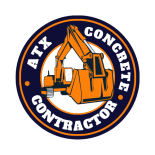Understanding the cost factors associated with concrete sealing services is pivotal when planning for this protective measure. Several elements contribute to the overall expense, influencing the budgeting process for such crucial surface maintenance.
Cost Factors In Budgeting
Surface Area and Complexity: The size and complexity of the surface play pivotal roles in determining sealing costs. Larger areas naturally require more sealant material and additional labor hours for application, which directly impacts material and labor costs. Beyond mere square footage, the intricacy of the design or irregularities in the surface texture can necessitate specialized techniques, potentially impacting labor expenses. This complexity might involve architectural elements, unique patterns, or obstacles that require meticulous attention. Accurate planning that considers not just the surface area but also the intricacies of the design ensures a more precise estimation of labor and materials required for the sealing process.
Surface Type and Condition: The surface condition is a significant determinant in sealing costs. Surfaces with existing damage, porosity, or prior coatings may demand extensive preparation, repair work, or multiple layers of sealant. Understanding these conditions is crucial for determining the amount of labor and materials needed for surface restoration before the sealing process. Different concrete types—stamped, exposed aggregate, or plain concrete—may require specific sealants tailored to their distinct properties. This understanding guides the selection of the most suitable sealant, impacting both material choice and labor involved in surface preparation.
Type of Sealant Chosen: The choice of sealant significantly influences both immediate and long-term sealing costs. Basic sealants might offer standard protection but may require more frequent reapplication due to lower durability. On the other hand, premium sealants like acrylic or epoxy provide superior and long-lasting protection but come with higher initial costs. Evaluating the balance between the initial expense and the long-term benefits involves considering factors like durability, lifespan, and maintenance needs. This ensures a judicious choice that aligns with long-term maintenance goals while considering the budget.
Preparation and Cleaning Efforts: Comprehensive surface preparation and cleaning are imperative for effective sealing. In-depth cleaning, repairs, or surface smoothening before sealing enhances the adhesion and performance of the sealant, potentially reducing future maintenance costs. Assessing the surface condition guides the necessary preparatory steps, impacting labor and material costs. Emphasizing the importance of comprehensive preparation highlights its role in extending the seal’s lifespan and minimizing future expenses related to repairs or resealing.
Labor Expenses: Labor costs significantly impact the overall sealing expenses. The complexity of surfaces or intricate designs may require skilled workers or specialized equipment, driving up labor expenses. Accurately estimating labor costs involves evaluating the expertise needed for surface preparation, application techniques, and equipment requirements. Additionally, regional variations in labor rates impact overall costs, underscoring the importance of considering local market dynamics in cost evaluations. Hiring skilled professionals ensures the job is done efficiently and effectively, contributing to the overall quality and longevity of the sealing.
Additional Treatments: Incorporating supplementary treatments or enhancements can elevate the project cost but significantly improve surface aesthetics and functionality. Assessing the impact of these enhancements on appearance, functionality, and long-term maintenance aids in making informed decisions. Evaluating the cost-effectiveness of additional treatments against their potential benefits ensures a worthwhile investment for prolonged surface durability and performance. Treatments like adding decorative finishes, using colored sealants, or incorporating non-slip additives can enhance both the aesthetic appeal and practicality of the sealed surface.
Maintenance Frequency: Anticipating future maintenance needs is crucial for budget planning. Regular maintenance is essential for preserving surface protection. Forecasting the frequency and intensity of maintenance helps estimate long-term upkeep costs. Planning for consistent maintenance ensures sustained surface durability, reduces the risk of damage, and minimizes long-term expenses. Regular cleaning and periodic resealing can help maintain the integrity and appearance of the surface, potentially extending the time between major resealing projects and saving costs in the long run.
By thoroughly considering these factors and making informed decisions, the sealing process can be more effectively planned and executed, optimizing both the short-term costs and long-term benefits of preserving concrete surfaces.
How To Reduce Budget Budgets for Surface Protection
Strategic Planning: Accurate assessment of the surface area, type, and condition helps in estimating material and labor needs, avoiding unnecessary expenses due to excess or insufficient materials.
DIY Preparatory Work: Undertaking surface cleaning, minor repairs, and preparatory work before professional sealing can reduce labor costs.
Optimal Sealant Selection: Choose sealants that strike a balance between upfront costs and long-term benefits, ensuring durability without overspending.
Regular Maintenance: Consistent upkeep, including regular cleaning and periodic resealing, prevents extensive damage, reducing the frequency of major resealing projects.
Comparative Quotes: Obtain quotes from multiple service providers to compare costs and services, ensuring competitive pricing while maintaining quality.
Focus on Essential Treatments: Prioritize essential treatments or enhancements that directly impact surface durability and functionality, avoiding unnecessary additional costs.
Professional Consultation: Seeking expert advice can help plan a cost-effective sealing process, ensuring optimal material usage and appropriate surface preparation.
By implementing these strategies, it’s possible to manage costs effectively while still achieving a durable and well-maintained sealed concrete surface.
Conclusion
Concrete sealing projects demand meticulous planning and budgeting due to the varied factors influencing overall costs. Understanding the nuances of these cost elements empowers informed decision-making, ensuring optimal protection for concrete surfaces within predefined budgets.
